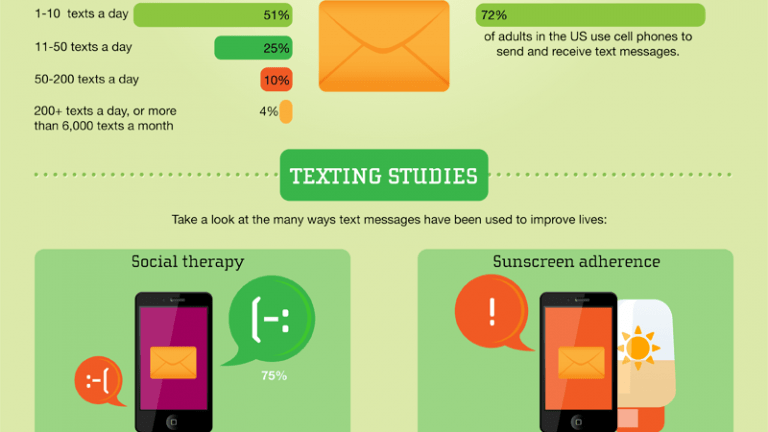Statistics for text messaging have been increasing rapidly over the past 5-10 years.
Originally thought of a childish form of communication for kids and teens, text messaging is now a large part of adult life in many societies.
There are many opponents to text messaging, saying that it reduces the quality of human to human communication and is creating a society that is much less personal.
See Also: How Many People Use Their Phone on the Toilet? [Infographic]
On the other hand, however, there are some studies that show how text messaging can be beneficial to society – especially when used to treat certain disorders and illnesses.
An infographic (posted below) was recently published by OnlineCollegeCourses.com that provides us with an overview of text messaging trends in the United States, as well as some specific examples of how text messaging has been beneficial for patients and doctors.
Text Messaging Statistics 2012 Infographic Highlights:
- Percent of US adults who have a cell phone by age:
- 18-29: 90%
- 30-49: 88%
- 50-64: 82%
- 65+: 57%
- Less than $30,000: 71%
- $30,000-$49,999: 82%
- $50,000-$74,999: 90%
- $75,000+: 93%
- Black: 87%
- Hispanic (english-speaking): 87%
- White: 80%
- 1-10 texts: 51%
- 11-50 texts: 25%
- 50-200 texts: 10%
- 200+ texts: 4%




